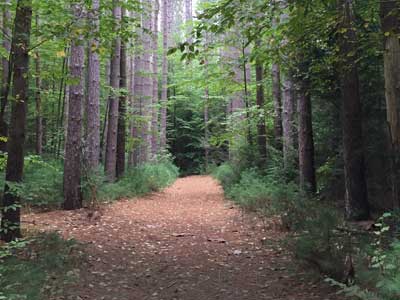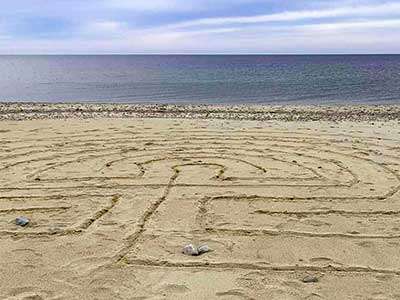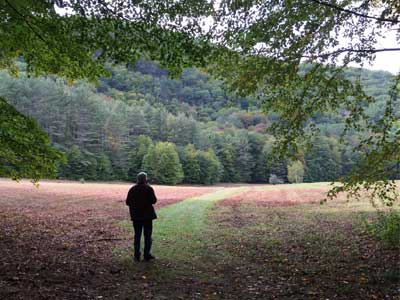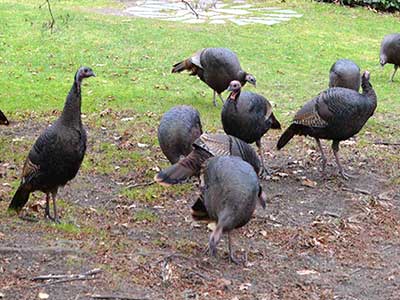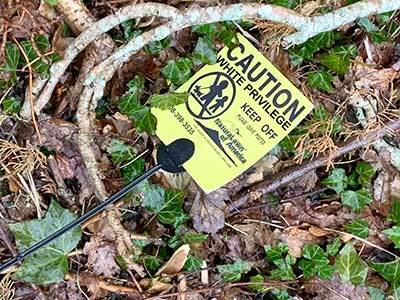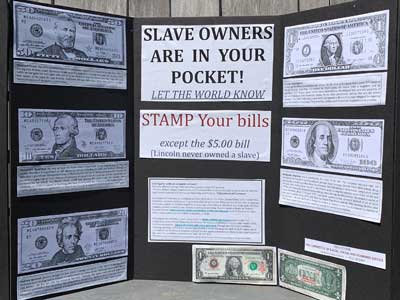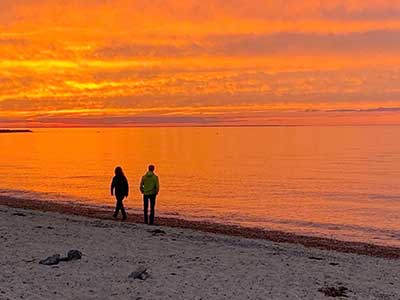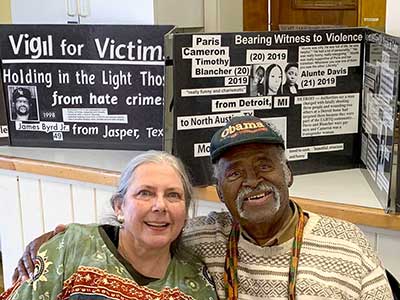by Lincoln Quillian, Devah Pager,Arnfinn H. Midtbøen, Ole Hexel | October 2017
Many white Americans believe that race is no longer central to one’s opportunities in life, and that we’re well on our way to systemic racial equality. Are these beliefs accurate? While it’s often difficult to measure levels of discrimination over time, research into hiring discrimination shows that black Americans still face discrimination in the hiring process. A meta-analysis of callback rates from all existing field experiments (24 total, including data from more than 54,000 applications across more than 25,000 positions) showed evidence of discrimination against both black and Latino applicants. Since 1990 white applicants received, on average, 36% more callbacks than black applicants and 24% more callbacks than Latino applicants with otherwise identical résumés. When it comes to Latinos, there is some evidence of a decline in discrimination over the past 25 years. Due to the small number of field experiments including Latinos, statistical tests indicate the evidence of decline is inconclusive. For blacks, however, researchers found no change in hiring rates over time.
TAGS: [Collective Action] [2010’s] [Systemic Racism] [Employment] [Denial] [Black Lives Matter] [Latino/a] [White Blindness] [White Privilege] [White Supremacy] [Implicit Bias] [Implicit Racism]
Resource Links Tagged with "White Supremacy"
When White People Stonewall; If White People Really Care about Their Relationships with BIPOC, They Need to Learn to Discuss Racism in an Open and Honest Way
by Savannah Worley | September 2021
I had a short romantic relationship with a white guy. He was cute, funny, and he didn’t get insecure when I helped him beat certain bosses in video games. But when I opened up to him about my past experiences with racism, he responded in ways a lot of white men do. “Well, I’m Irish! We suffered discrimination too!” “I experienced bullying in school because I wore glasses.” “Are you sure what you experienced was racism?” “I’m poor, so I can’t have privilege.”
I eventually sat him down and tried to educate him on white supremacy and white privilege (even though he could have done his own research). After I was done, all he said was, “Okay.” That was it. He didn’t engage in the discussion at all. I was left feeling unheard and ignored. Shortly after our discussion, he started to make jokes about slavery and started calling me his “sassy Black lady.” Among other reasons, I decided to dump him. His being cute and funny just wasn’t enough for me.
TAGS: [Individual Change] [2020’s] [Systemic Racism] [“All Lives Matter”] [White Defensiveness] [White Privilege] [White Blindness] [White Fragility/Tears] [Microaggressions] [Implicit Bias] [White Supremacy] [Silencing POC]
It Turns Out, All Those ‘Woke’ White Allies Were Lying
by Michael Harriot | May 2021
When the country collectively witnessed the brutal May 25, 2020 death of George Floyd, white people were forever changed. Millions took to the streets, arm-in-arm with their fellow brethren, offering their support for justice and equality. …This multiracial outpouring of sympathy and solidarity transformed the country. And then, white people went home and kept being white. This harsh realization is not an opinion. It is a factual statement based on the research and analyses of multiple organizations. And before we get to the “not all white people,” part of the conversation, let’s be clear, the reports are based on studies that showed that the vast majority of white people didn’t just not do anything. According to stuff like math and science, the levels of white support are lower than they were before demonstrations swept the country last summer. For instance, remember all those corporations who pledged to donate money to social justice organizations? Well, it turns out that the companies employed a very complex loophole called “lying like a motherfucker” to get out of actually doing what they said they would. According to a review of pledges compiled by Creative Investments Research, businesses have donated less than one percent of the money promised.
TAGS: [Collective Action] [2020’s] [Social Justice] [Systemic Racism] [Police Shootings] [Black Lives Matter] [White Blindness] [White Culture] [White Supremacy] [White Privilege] [Policing] [History] [Politics]
Uncovering Indigenous Worlds and Histories on a Bend of a New England River before the 1650s: Problematizing Nomenclature and Settler Colonial History, Deep History, and Early Colonization Narratives
by Christoph Strobel | February 2022
The essay explores the often-ignored histories of the indigenous people who resided on the confluence of the Merrimack and the Concord rivers up to the 1650s. This place is characterized by a significant bend in the Merrimack River as it changes its southerly flow into an easterly direction. Today, the area includes the modern city of Lowell, Massachusetts, and its surroundings. While the 1650s saw the creation of a Native American “praying town” and the incorporation of the Massachusetts Bay Colony’s towns of Chelmsford and Billerica, it is the diverse and complex indigenous past before this decade which North American and global historians tend to neglect. The pre-colonial and early colonial eras, and how observers have described these periods, have shaped the way we understand history today. This essay problematizes terminology, looks at how amateur historians of the 19th and early 20th centuries have shaped popular perceptions of Native Americans, and explores how researchers have told the history before the 1650s. The materials available to reconstruct the history of the region’s Native Americans are often hard to find, a common issue for researchers who attempt to study the history of indigenous peoples before 1500. Thus, the essay pays special attention to how incomplete primary sources as well as archeological and ethnohistorical evidence have shaped interpretations of this history and how these intellectual processes have aided in the construction of this past.
TAGS: [Strategies] [2020’s] [Indigenous] [History] [Systemic Racism] [Implicit Bias] [Myths] [Politics] [Slavery] [White Supremacy] [White Culture] [Silencing POC] [Health Disparities] [Economics]
Anti-Racism is about Social Responsibility, Not Racial Guilt; Allyship is a Journey, and Shame Has Never Been the Destination
by Tim Wise | November 2021
Worried that racial justice activism might embolden progressives pushing for meaningful equity initiatives in policing, the workplace, and elsewhere, conservatives latched on to this strategy — attacking classroom discussions of racism as “indoctrination” — so as to limit awareness of racial injustice among youth, energized by last summer’s events. The right claims anti-racist curriculum is about guilt-tripping white students. One of the primary weapons in the rhetorical arsenal of this advancing army has been the claim that anti-racist curriculum seeks to make white children feel guilt and shame because of their skin color.
TAGS: [Individual Change] [2020’s] [Anti-Racism] [White Supremacy] [White Culture] [White Privilege] [Social Justice] [Policing] [Employment] [White Fragility/Tears] [History] [Teachers] [Systemic Racism] [Slavery] [Black Lives Matter] [Indigenous] [Advocacy][CRT]
BLACK LIVES MATTER; How White Feminism Failed in the Age of Trayvon Martin
by Rachel Cargle | February 2022
It was the Women’s March on January 21, 2017, that opened my eyes to the racist underbelly of the feminist movement. I was so eager to be a part of what was happening that I partnered with a friend of mine to organize a busload of people to leave from Manhattan’s Lower East Side for our nation’s capital at 4 a.m that day. … Admittedly, it didn’t dawn on me right away. It wasn’t until weeks after the march — after I was called in by a group of Black peers inviting me to question the ways white feminism gave space for my Blackness — that I took a pause to really think it through. At the march, there was an abundance of pink pussy hats but a disturbing lack of Black people among the millions chanting. It was alarming to consider, especially since the country remained in the midst of racial unrest. Audre Lorde once said, “I am a Black Feminist. I mean I recognize that my power as well as my primary oppressions come as a result of my blackness as well as my womaness, and therefore my struggles on both of these fronts are inseparable.” Years after she spoke these words, I felt the same tense inseparability of my doubly oppressed identity.
TAGS: [Individual Change] [2020’s] [Systemic Racism] [White Supremacy] [White Culture] [White Privilege] [White Blindness] [Anti-Racism] [Social Justice] [Racial Terrorism] [Policing] [Intersectionality] [Black Lives Matter] [Advocacy]
America’s Gun Obsession is Rooted in Slavery; A Series of Slave Revolts Terrified White Residents and Helped Fuel the Rationale for Gun Ownership
by Carol Anderson | June 2021
For too long, the second amendment has been portrayed with a founding fathers aura swaddled in the stars and stripes. But “a well-regulated militia” wasn’t, as the story goes, about how valiant and effective the militias were in repelling the British. George Washington was disgusted with their lack of fighting ability and the way the men would just cut and run from battling against a professional army. Nor was the militia reliable as a force to uphold the law. In Shays’ Rebellion, bands of armed white men, who were in the state’s militia, attacked the Massachusetts government because of foreclosures and debt seizures, demonstrating, again, how unreliable the militia were. Boston merchants had to hire mercenaries to put down the rebellion.
On the other hand, where the militia had been steadfast was in controlling the enslaved Black population. Access to guns for white people was essential for this function.
TAGS: [Racial Terrorism] [2020’s] [Economics] [Justice System] [White Supremacy] [White Culture] [White Privilege] [Politics] [White Blindness] [White Defensiveness] [History] [Black Lives Matter] [Social Justice] [Systemic Racism] [Slavery] [Policing] [Silencing POC]
The Re-Assassination of Martin Luther King, Jr.
by Wendell Griffen | January 2022
This year, the Arkansas Martin Luther King Jr. Commission, an agency of the Arkansas Department of Education, has invited an un-reconstructed Southern Baptist preacher, right wing politician, and Fox News pundit named Mike Huckabee to deliver a “keynote address” during what it terms an “inter-faith prayer breakfast” on the King holiday (January 17). Attendance will be by invitation only. The event will be held at the Arkansas Governor’s Mansion.
TAGS: [Strategies] [2020’s] [History] [Systemic Racism] [Social Justice] [Role Model] [Politics] [Racial Terrorism] [Civil War] [Black Lives Matter] [White Supremacy] [White Culture] [Economics] [White Privilege] [White Blindness] [Intersectionality]
More than 1,700 Congressmen Once Enslaved Black People. This Is Who They Were, and How They Shaped the Nation.
by Julie Zauzmer Weil, Adrian Blanco and Leo Dominguez| January 2022
From the founding of the United States until long after the Civil War, hundreds of the elected leaders writing the nation’s laws were current or former slaveowners. More than 1,700 people who served in the U.S. Congress in the 18th, 19th and even 20th centuries owned human beings at some point in their lives, according to a Washington Post investigation of censuses and other historical records.
TAGS: [Racial Terrorism] [2020’s] [Civil War] [Slavery] [Politics] [Systemic Racism] [White Supremacy] [White Culture] [White Privilege] [White Blindness] [Justice System] [History] [Black Lives Matter] [Silencing POC] [Confederate Monuments] [Indigenous]
Native Americans and Mount Rushmore
by From the Collection: Native Americans | Date Unknown
The creation of Mount Rushmore is a story of struggle — and to some, desecration. The Black Hills are sacred to the Lakota Sioux, the original occupants of the area when white settlers arrived. For some, the four presidents carved in the hill are not without negative symbolism. The Sioux have never had much luck dealing with white men. In the Treaty of 1868, the U.S. government promised the Sioux territory that included the Black Hills in perpetuity. Perpetuity lasted only until gold was found in the mountains and prospectors migrated there in the 1870s. The federal government then forced the Sioux to relinquish the Black Hills portion of their reservation.These events fit the pattern of the late 19th century, a time of nearly constant conflict between the American government and Plains Indians. At his second presidential inauguration in 1873, Ulysses S. Grant reflected the attitudes of many whites when he said he favored a humane course to bring Native Americans “under the benign influences of education and civilization. It is either this or war of extermination.” Many of the land’s original occupants did not choose to assimilate; for them war, was the only option.”
TAGS: [Strategies] [Indigenous] [Racial Terrorism] [Systemic Racism] [Silencing POC] [White Supremacy] [White Culture] [White Blindness] [Politics] [Social Justice] [History] [White Privilege] [Prison System] [Art & Culture]
Opinion: Why Norman Rockwell Left Thanksgiving Americana behind
by Andrew L. Yarrow | November 2021
At this time of year, Norman Rockwell is best remembered for his iconic 1943 painting “Freedom From Want,” depicting a smiling White family gathered around a Thanksgiving turkey. But it is less well known that he decisively turned a corner just a few decades later, choosing to reject the airbrushed image of a nation implicitly populated with only happy, White, middle-class families.
TAGS: [Strategies] [2020’s] [Systemic Racism] [Prison System] [Policing] [Black Lives Matter] [Art & Culture] [White Supremacy] [White Culture] [White Privilege] [History] [Politics] [Social Justice]
Jim Crow Laws
by history.com Editors| Updated January 2022
Jim Crow laws were a collection of state and local statutes that legalized racial segregation. Named after a Black minstrel show character, the laws—which existed for about 100 years, from the post-Civil War era until 1968—were meant to marginalize African Americans by denying them the right to vote, hold jobs, get an education or other opportunities. Those who attempted to defy Jim Crow laws often faced arrest, fines, jail sentences, violence and death.
TAGS: [Racial Terrorism] [2020’s] [Systemic Racism] [Silencing POC] [Racial Covenants] [History] [Collective Action] [Denial] [Politics] [White Supremacy] [White Culture] [White Privilege] [Black Lives Matter] [Policing] [Prison System] [Housing] [Justice System] [Advocacy] [Role Model] [Definitions]
Penobscot Nation Members Do Not Want Ancestors’ Scalping Whitewashed; A new educational film produced by the tribe explains how settlers were encouraged to scalp natives for cash bounties.
by David Sharp | December 2021
Most Americans know about atrocities endured by Native Americans after the arrival of European settlers: wars, disease, stolen land. But they aren’t always taught the extent of the indiscriminate killings. Members of the Penobscot Nation in Maine have produced an educational film addressing how European settlers scalped — killed — Indigenous people during the British colonial era, spurred for decades by cash bounties and with the government’s blessing. “It was genocide,” said Dawn Neptune Adams, one of the three Penobscot Nation members featured in the film, called “Bounty.” She said the point of the effort isn’t to make any Americans feel defensive or blamed. The filmmakers say they simply want to ensure this history isn’t whitewashed by promoting a fuller understanding of the nation’s past. At the heart of the project is a chilling declaration by Spencer Phips, lieutenant governor of the Province of Massachusetts Bay.
TAGS: [Racial Terrorism] [2020’s] [Indigenous] [Systemic Racism] [History] [Social Justice] [White Supremacy] [White Privilege] [White Culture] [Politics] [Economics] [Teachers] [White Blindness]
The Indigenous Connection to the Underground Railroad
Submitted by Roy Finkenbine | June 2021
Most stories of the Underground Railroad follow the narrative of white people helping Black people escape slavery, but overlook the involvement of Indigenous allies who often risked their own lives to help freedom seekers cross into Canada safely. Historian Roy Finkenbine is among those rewriting that history. He’s working on a book tentatively called, Freedom Seekers in Indian Country, while teaching African American history at the University of Detroit Mercy. He spoke with Falen Johnson, host of Unreserved, about his research on Indigenous involvement in the Underground Railroad, and why he feels a moral obligation to write about it. What questions are you trying to answer in your upcoming book, Freedom Seekers in Indian Country? I’m looking at how and why Native Americans helped freedom seekers. How they helped includes providing sanctuary among their communities – often to boost their populations – and in assisting people to cross the border. They shared a kinship based on a common enemy, if we can use that term, in terms of white expansionism. Many groups like the Ojibwa referred to African-Americans as cousins and brothers. Peter Jones, a [Mississauga] missionary, said, and I’m paraphrasing here, “Negroes,” as he said, “have it even worse because of the iron bands of slavery. So we have an obligation to help.”
TAGS: [Assumptions] [2020’s] [Slavery] [Indigenous] [History] [Myths] [White Culture] [White Privilege] [White Supremacy] [Systemic Racism]
Time Will Not Heal: 5 Ways to Address the Inheritance of Black Poverty, Starting Now
by Richard V. Reeves | June 2021
In white families, poverty is almost never passed down “like a disease”. Our just-published paper shows that just 1.3% of whites are experiencing third-generation poverty. By comparison, more than one in five Black Americans (21.3%) are in the third generation of their family to be poor. (The full paper, co-authored with Scott Winship and Santiago Deambrosi of AEI as well as Christopher Pulliam and Ariel Gelrud Shiro from our own team, is “Long Shadows: The Black-white gap in multigenerational poverty”). Our paper represents the first attempt to analyze income mobility patterns across three generations, back to the Civil Rights era, and it is an empirical challenge. But the overall pattern is starkly clear. Black Americans are sixteen times more likely to be in the third generation of poverty, defined as the bottom fifth of the income distribution (i.e. less than around $48,000 a year for a family of four in today’s money).
TAGS: [Strategies] [2020’s] [Economics] [Systemic Racism] [Black Lives Matter] [Tips-Dos/Don’ts] [White Privilege] [White Culture] [White Supremacy] [History] [Social Justice] [Reparations] [Housing] [Indigenous] [Justice System]
The Grave of a Former Slave Turned Florida State Senator May Be Buried Under What’s Now A Tampa Parking Lot
by J.L. Cook | June 2021
As Juneteenth approaches, Tampa’s local NAACP wants the city to commit to finding the graves that once rested at College Hill Cemetery. Robert Meacham, who became a Florida state senator after being freed from slavery, is one of more than 1,200 people buried at a site that is now believed to be a parking lot for the Italian Club Cemetery in Tampa, Fla. According to the Tampa Bay Times, Meacham’s unmarked grave was located in the College Hill Cemetery for Blacks and Cubans–which has long been erased. In an effort to rectify this, the local NAACP branch in Tampa has challenged the city to commemorate Juneteenth by funding an archaeological survey of the Italian Club Cemetery lot to find out if Meacham’s body and others are there.
TAGS: [Collective Action] [2020’s] [History] [Systemic Racism] [White Culture] [White Supremacy] [White Privilege] [Politics] [Silencing POC] [Black Lives Matter] [Social Justice] [Slavery] [Accountability]
Indigenous Women Still Forced, Coerced into Sterilization: Senate Report
by Fakiha Baig | June 2021
A Cree woman had just given birth to her sixth child in Saskatoon, when she was presented with a consent form for her sterilization. “She tried to wheel herself away from the operating room, but the doctor wheeled her right back in the direction of the same operating room,” says a new government report, which details the woman’s sterilization in 2001. “When she was in the operating room, she kept asking the doctor if she was done yet. Finally, he said, ‘Yes. Cut, tied and burnt. There, nothing is getting through that.”’
TAGS: [Racial Terrorism] [2020’s] [Indigenous] [Systemic Racism] [White Supremacy] [History] [Health Disparities]
What Is Critical Race Theory, and Why Is It Under Attack?
by Steven Sawchuk | May 2021
Is “critical race theory” a way of understanding how American racism has shaped public policy, or a divisive discourse that pits people of color against white people? Liberals and conservatives are in sharp disagreement. The topic has exploded in the public arena this spring—especially in K-12, where numerous state legislatures are debating bills seeking to ban its use in the classroom. …Critical race theory is an academic concept that is more than 40 years old. The core idea is that racism is a social construct, and that it is not merely the product of individual bias or prejudice, but also something embedded in legal systems and policies. The basic tenets of critical race theory, or CRT, emerged out of a framework for legal analysis in the late 1970s and early 1980s created by legal scholars Derrick Bell, Kimberlé Crenshaw, and Richard Delgado, among others.
A good example is when, in the 1930s, government officials literally drew lines around areas deemed poor financial risks, often explicitly due to the racial composition of inhabitants. Banks subsequently refused to offer mortgages to Black people in those areas.
TAGS: [Strategies] [2020’s] [Housing] [Systemic Racism] [Politics] [Social Justice] [White Privilege] [White Supremacy] [White Culture] [White Defensiveness] [Slavery] [Definitions] [Racial Covenants] [Black Lives Matter] [Latino/a] [Teachers] [History]
The Bloody History of Anti-Asian Violence in the West; One of the Largest Mass Lynchings in the United States Targeted Chinese Immigrants in Los Angeles
*Paywall Alert
by Kevin Waite | May 2021
This year marks the 150th anniversary of one of the largest mass lynchings in American history. The carnage erupted in Los Angeles on October 24, 1871, when a frenzied mob of 500 people stormed into the city’s Chinese quarter. Some victims were shot and stabbed; others were hanged from makeshift gallows. By the end of the night, 19 mangled bodies lay in the streets of Los Angeles.Lynching is a term most often associated with violence against African Americans in the post-Civil War South. But racial hatred has never been quarantined to one American region or confined to a single ethnic group. In Los Angeles in 1871, the victims were Chinese immigrants. Their deaths were part of a wave of anti-Asian violence that swept across the 19th-century American West—and reverberates to this day.
TAGS: [Racial Terrorism] [2020’s] [White Supremacy] [White Culture] [History] [Asian] [Systemic Racism] [White Privilege] [Silencing POC]
Dr. West Throws The Gauntlet Down on White America; Brings Don Lemon to Tears
by Herb Dyer, Jr. | April 2021
In a recent appearance on Don Lemon’s CNN nightly talk fest, the good professor brought Lemon to tears with his analysis of the Derek Chauvin trial for that killer-cop’s (and his buddies) cold-blooded, public, callous and nonchalant — almost gleeful at times — lynching of George Floyd. Dr. West issued both a demand and a warning to white America and its police forces who do not seem to be able to stop killing black people. The gist of Dr. West’s comments is that black people today are not going to submit to teaching yet another generation of black children how to navigate their way through the white supremacist/white racist maze, its mental, physical (structural/institutional/systemic)and emotional roadblocks and obstacles placed everywhere and every time black people dare to act out their humanity.
TAGS: [Collective Action] [2020’s] [Politics] [Economics] [White Culture] [White Supremacy] [Systemic Racism]
Anthropology, Racial Science, and the Harvesting of Black Bones: Dr. Michael Blakey Interviewed
by Dr. Jemima Pierre | May 2021
Most renowned academic institutions in the United States are implicated in the macabre practices of “racial” science. “They don’t see African Americans as the same real complete human beings that they and their white families and neighbors are.” On Mother’s Day, May 13, 1985, the City of Philadelphia dropped two bombs on the MOVE Organization compound on Osage Avenue , killing 11 people including 5 children. Thirty-six years later, on April 21, 2021 , we learned that two anthropology professors had held on to the bones of two of the MOVE children. Alan Mann, a currently retired forensic anthropologist, had kept the remains of Tree and Delisha Africa in a cardboard box at the University of Pennsylvania Museum, and shuttled them back and forth between his jobs at UPenn and Princeton University. Janet Monge, Mann’s former student and currently a lecturer at both universities, used the bones in an online Princeton anthropology course titled, “Real Bones: Adventures in Forensic Anthropology.”
TAGS: [Strategies] [2020’s] [Racial Terrorism] [History] [White Supremacy] [Black Lives Matter] [Indigenous] [Slavery] [Systemic Racism] [Myths] [Social Justice] [Anti-Racism] [Politics]
What White Colleagues Need to Understand; White Supremacy Doesn’t Stop at the Teachers’ Lounge Door
by Clarice Brazas, Charlie McGeehan | Spring 2020
As educators doing antiracism work, we often focus extensively on the impact that white supremacy has on students. But even though we recognize that white supremacy shapes all of our lives and work, we spend little time talking about its impact on educators. …
We know we all live in the same society of racism and white supremacy. We know white educators have the privilege to ignore these conditions and often do. And we know our collaboration is the exception, not the rule. For this article, we interviewed eight educators of color across the country to hear about their work with white colleagues. We found disheartening trends. Educators of color report that they’re expected to take on a disproportionate share of work supporting students and teaching about race and racism. This work, they say, is often made more difficult by the indifference—and sometimes resistance—of white colleagues.
TAGS: [Collective Action] [2020’s] [White Supremacy] [Systemic Racism] [White Privilege] [Teachers] [Tips-Dos/Don’ts] [Anti-Racism] [White Fragility/Tears] [Latino/a]
For Our White Friends Desiring to be Allies
by Courtney Ariel | August 2017
1. Listen more; talk less. …
2. For one out of every three opinions/insights shared by a person of color in your life, try to resist the need to respond with a better or different insight about something that you read or listened to as it relates to their shared opinion. …
3. Being an ally is different than simply wanting not to be racist (thank you for that, by the way). Being an ally requires you to educate yourself about systemic racism in this country. …
4. Please try not to, “I can’t believe that something like this would happen in this day and age!” your way into being an ally when atrocities like the events in Charleston, S.C. …
5. Ask when you don’t know — but do the work first. This is nuanced. …
6. And finally, stop talking about colorblindness.
TAGS: [Individual Change] [2010’s] [Tips-Dos/Don’ts] [Anti-Racism] [Silencing POC] [White Supremacy] [White Privilege] [Systemic Racism] [Colorblindness] [Indigenous] [Slavery] [Black Lives Matter] [Intersectionality] [Denial] [Reparations]
8 Ways People of Color are Tokenized in Nonprofits
by Helen Kim Ho | September 2017
There’s a type of racism in the workplace many of us have personally witnessed, perpetrated or experienced: tokenism. Nowhere have I seen this play out more than in the nonprofit space. Tokenism is, simply, covert racism. Racism requires those in power to maintain their privilege by exercising social, economic and/or political muscle against people of color (POC). Tokenism achieves the same while giving those in power the appearance of being non-racist and even champions of diversity
TAGS: [Strategies] [2010’s] [White Privilege] [White Culture] [Systemic Racism] [Economics] [History] [Tips-Dos/Don’ts] [Social Justice] [Accountability] [White Supremacy] [White Blindness] [Black Lives Matter] [Asian] [Politics] [White Fragility/Tears] [Employment]
5 Phrases Your Black Friend Wishes You’d Stop Saying; If You Start Practicing Now, You Can Probably Eliminate These Words from Your Vocabulary by Black History Month
by Ajah Hales | January 2020 Statistically speaking, about 75% of White people don’t even have a Black friend, but on the off chance that you are one of the White people who do, I have a message for you from your (one) Black friend: Do better. In her New York Times...
Private Museums Could Face NAGPRA Scrutiny; Museums and Other Institutions that Accept Stimulus Funds Could Be Required to Repatriate Indigenous Artifacts and Remains
by Nanette Kelley | May 2021
Small museums and private institutions that accept federal CARES Act money or other stimulus funds could be forced to relinquish thousands of Indigenous items and ancestral remains now in their collections.
Under the Native American Grave Protection and Repatriation Act of 1990, museums or other institutions that accept federal funding must compile an inventory of Indigenous cultural items and initiate repatriation of the collections and remains to tribes or family members. At least two museums are now facing possible scrutiny – the nonprofit Favell Museum of Native American Artifacts and Contemporary Western Art in Klamath Falls, Oregon, and the End of the Trail Museum, which is connected to the Trees of Mystery gift shop in the redwood forest in Klamath, California.
TAGS: [Assumptions] [2020’s] [Indigenous] [Art & Culture] [Silencing POC] [History] [Politics] [White Supremacy] [White Culture] [Economics] [Systemic Racism] [Advocacy] [Social Justice]
Historical Foundations Of Race
by David R. Roediger | Date Unknown
The term “race,” used infrequently before the 1500s, was used to identify groups of people with a kinship or group connection… The modern-day use of the term “race” is a human invention. The world got along without race for the overwhelming majority of its history. The U.S. has never been without it. Race is a human-invented, shorthand term used to describe and categorize people into various social groups based on characteristics like skin color, physical features, and genetic heredity. Race, while not a valid biological concept, is a real social construction that gives or denies benefits and privileges. American society developed the notion of race early in its formation to justify its new economic system of capitalism, which depended on the institution of forced labor, especially the enslavement of African peoples. To more accurately understand how race and its counterpart, racism, are woven into the very fabric of American society, we must explore the history of how race, white privilege, and anti-blackness came to be.
TAGS: [Strategies] [White Privilege] [Systemic Racism] [History] [Slavery] [Definitions] [White Supremacy] [White Culture] [Indigenous] [Economics]
Slave Traders Knew Exactly What They Were Doing; A New History of Three 19th-Century Human Traffickers Explodes All the Old Excuses
by Rebecca Onion | April 2021
The Ledger and the Chain tells the story of how these three men profited from the United States’ decision to outlaw the foreign slave trade, in 1808. The change, of course, did not put an end to slavery inside the United States, and because the slaveholding states of the Upper South were finding that their land was increasingly difficult to work after decades of tobacco cultivation, they profited by selling people further South, where cotton and sugar production was booming. …
This dynamic is most visible in the traders’ letters discussing teenage girls who were sold as sex slaves. In trading these young women, identifiable in documentation by their much-higher-than-usual prices (and, sometimes, by the traders’ explicit discussion of their likelihood to sell for those purposes), Franklin, Armfield, and Ballard prided themselves on their ability to know what buyers might want—their success “speculating on the erotic desires of slaveholders.” They also raped such women, themselves; Rothman found many ribald references to those activities in their own correspondence, interspersed with discussions of everyday business matters.
TAGS: [Racial Terrorism] [2020’s] [Slavery] [History] [Systemic Racism] [Black Lives Matter] [White Supremacy] [White Culture] [White Privilege] [Social Justice] [Politics]
Black Soldiers Played an Undeniable but Largely Unheralded Role in Founding the United States; Veterans like Prince Hall Fought for Independence and then Abolition in the Earliest Days of the Nation
by David A. Taylor | February 2021
Just after dawn on Christmas Day 2020, Clarence Snead Jr., received a phone call with harrowing news: The Prince Hall Masonic Lodge in Providence, Rhode Island, was ablaze. Snead, whose nickname is “Grand” (for “Most Worshipful Grand Master”), rushed the half-hour drive to the lodge on Eddy Street and found the building engulfed in flames. The lodge had a remarkable history that a passerby might not suspect from the two-story wooden structure; a destructive blaze would strike a terrible blow for historic preservation. It housed one of the earliest organizations established by African Americans, stretching back to the era of Prince Hall, a black Bostonian and Revolutionary War veteran. Hall started the first lodge for black Freemasons in his home city in the 1770s with a charter obtained from British Freemasons, because Massachusetts’ white Masonic brethren rejected his application. The arc of Hall’s life and legacy point to the underappreciated role played by African Americans in the Revolution, an indication that the path to black civil rights is as old as the nation itself.
TAGS: [Strategies] [2020’s] [History] [Black Lives Matter] [Slavery] [Social Justice] [White Supremacy] [Indigenous]
Return the National Parks to the Tribes; The Jewels of America’s Landscape Should Belong to America’s Original Peoples.
by David Treuer | April 2021
The American story of “the Indian” is one of staggering loss. Some estimates put the original Indigenous population of what would become the contiguous United States between 5 million and 15 million at the time of first contact. By 1890, around the time America began creating national parks in earnest, roughly 250,000 Native people were still alive. In 1491, Native people controlled all of the 2.4 billion acres that would become the United States. Now we control about 56 million acres, or roughly 2 percent. And yet we remain, and some of us have stayed stubbornly near the parks, preserving our attachment to them. Grand Canyon National Park encloses much of the Havasupai Tribe and its reservation. Pipe Spring National Monument sits entirely inside the 120,000-acre Kaibab Paiute Indian Reservation, in northern Arizona. Many other parks neighbor Native communities. But while the parks may be near us, and of us, they are not ours.
TAGS: [Racial Terrorism] [2020’s] [History] [Indigenous] [Systemic Racism] [White Supremacy] [White Culture] [White Privilege] [Denial] [Social Justice] [Accountability] [Environment] [Politics] [Assumptions] [Silencing POC]
